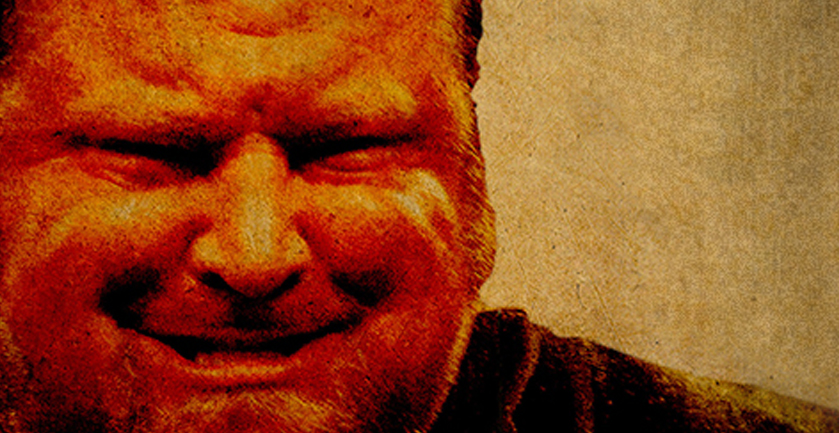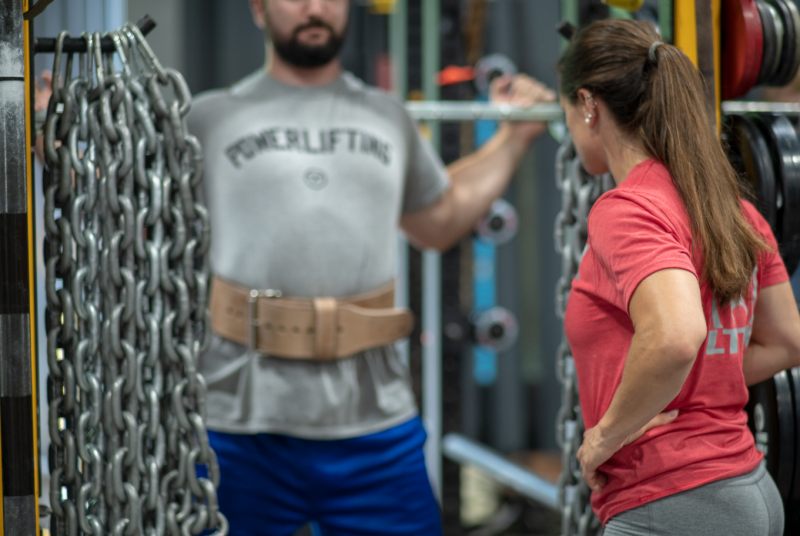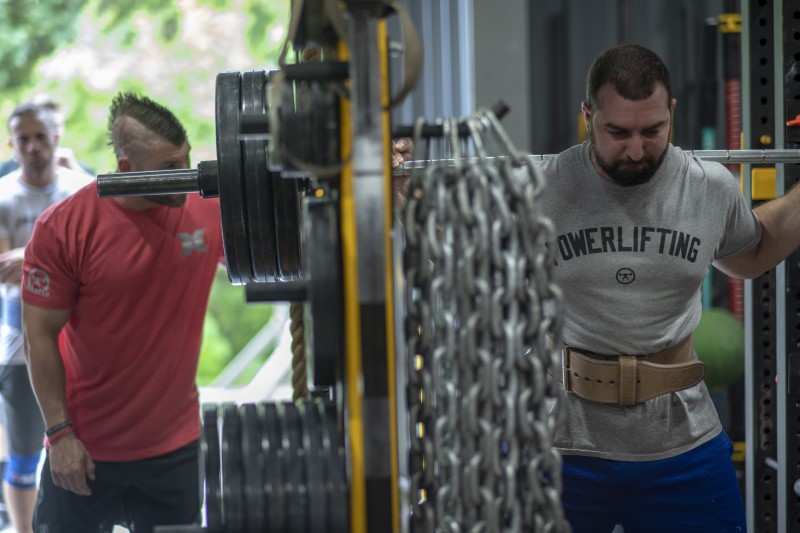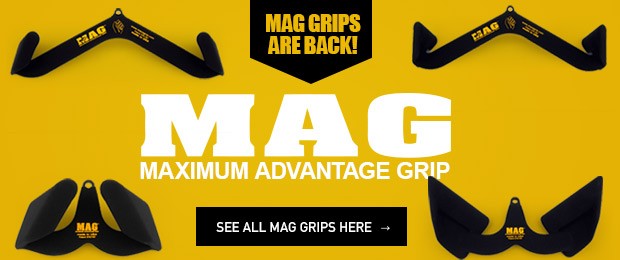
I’m going to try something a bit different with my column this time. I recently received a message from a lifter who just started an internship with a college strength and conditioning staff. He wanted to know if it would be OK to ask me some questions because I am beginning to work with more athletes for strength and conditioning. I, of course, agreed to answer them the best I could but warned him that my answers may be a lot different than ones he would hear from football or other sport coaches. Once I saw the five questions he asked, I thought, “Wow, those are great questions and would make excellent articles!” So, I asked if he would mind my turning them into articles. And here we are.
When you first began to work with an athlete, how did you determine what needed to be prioritized first (i.e., mobility, strength, power output, conditioning, etc.)?
That depends on the athlete. I believe that any trainer, coach, personal trainer, etc., should always start a new client or athlete with an evaluation of his current situation. For me, this starts with observing the client when I first meet him. You can tell a lot by how a person walks, sits, stands, gets on the floor, gets up from the floor, and simply carries himself or herself overall. For instance, I could see a hitch in the client’s gate patterns. I may see a wince in his face when he sits or bends over. I may see Janda syndrome in how he stands. Just by watching him, I could see imbalances in his muscularity from the right and left sides or from the posterior to the anterior. This alone will not give you complete answers, but it will steer you in the correct direction of any issues you need to know about.
RECENT: Becoming Elite and Beyond: A Journey from the Tiger to the Dragon
I next go into a history of past injuries or issues that the client has dealt with. I need to know if the client has had any major surgeries or injuries. I want to know how rehab went and how the injuries are today. I need to know if he has any troublesome or nagging areas. I also want to know if he has any areas with reoccurring injuries. This would be things like lots of ankle issues or back issues. I also need to know if there are any current injuries, even if it is one of those nagging things that is currently bothering him. I often ask about what rehab he did for these injuries and if he is currently doing anything for them now.

We then move onto checking flexibility. This is very important and should not be overlooked. If injuries or any pain is present, an issue likely exists. Even if the athlete seems healthy, it is still very important to check these because many injuries or issues begin in this area. You could find a strong key to injury prevention in flexibility and mobility, especially for athletes. In addition, it is important to remember what you saw during your observation of the client. This is where you go deeper into discovering the cause of the abovementioned issues. I don’t think it matters much where you start as long as you hit the whole body.
Let’s start with the lower body first. I go to the hip internal and external rotation. I do this by having the client lie in a supine position with a neutral low back and straight legs. I pull one leg up to 90 degrees and then test the internal and external rotation. I follow this by testing the hip flexion. Here, I am checking for the flexibility of the hip joint on each side and the difference between them. I then check the hamstring’s flexibility with a straight leg followed by a glute stretch that takes the knee to the opposite shoulder. I also check the spine rotation by having the client bend his knees up in a sit-up position and then taking them from the right side to the left side. I always check each side and then compare them. Next, I move to the hip extension with the client lying on his side. I then move to the hip slide, which is where the client is on his hands and knees. Then, I have the client slide the hips back toward the feet. This works best with the feet against the wall. While in this position, I usually have the client do a quick cat camel stretch to give me an idea of his back flexibility. Then, ankle flexibility is next on our list. I simply test the supination, pronation, flexion, and extension of the ankle. I like to test these both lying and standing.
I then move to the upper body starting with the shoulder internal and external rotation. I do this by having the client lie supine with the knees up. I put the client’s arm 90 degrees from his body with his forearm 90 degrees to the ground. I have to keep the shoulder and humerus down with one hand while taking the arm at the wrist into internal and external rotation. I also test the shoulder flexion holding down the shoulder and the humerus. At this point, I like to finish with simple neck flexibility, just checking the rotation, flexion, extension, retraction, and protraction.
I continue by moving onto mobility. I see mobility as the ability to put the body into a flexible position. Just because we can put someone into a flexible position does not mean that he has the strength to put himself or herself there. So, we cannot think that the joint must be fine simply because it is flexible. A great example of this is the external rotation of the shoulder. I often see clients whom I can put into OK external rotation and they may even be able to do it lying down with gravity assistance. Once I stand them up, they cannot get as far into the external rotation. We must assess both flexibility and mobility. For the sake of this article, I am going over them separately, but oftentimes, I assess them at the same time. So, in the supine position, I go through the lower body mobility right after flexibility before moving on. I have the client pull the knee up to the chest one leg at a time for the hip flexion. Then, the client must repeat this with a straight leg for the hamstring and hip flexion mobility. I then have the client sit up to show him the hip external rotation. It is the same position with one leg out to the side and with the client pulling the knee in for the internal rotation. In this sit-up position, the client must demonstrate a bridge to check the hip extension and glute activation. I then have the client lie down on his side to check the abduction mobility by having him lift one leg up. Then, he must bend the top leg up and lift the lower leg into adduction. I next have the client roll into a prone position to have him do a hips-down push-up to check the back extension. We can then move to the upper body. I do the same internal, external, and flexion with the shoulder, but I see how far the client can take himself. I like to do these while holding the shoulders down and then without doing this to see at what point the humerus comes up without my help. I see if the client can put his hand behind his back to test the internal mobility. I then have the client stand up and do the wall slide followed by shoulder circles against a wall (standing 90 degrees to the wall). The seated t-spine rotation is next and is done with the hands behind the neck. Squatting with a dowel or PVC overhead can give you a great idea of a client’s shoulder mobility as well.

After this assessment, you should have a pretty good idea about what is going on with your client, but we still need to assess strength and conditioning. I tend to keep this very simple and like to use standard lifts to do a rough assessment, usually during our first training sessions. The same applies to conditioning. The best way in which to evaluate this is by putting the client through some training. Where I start my assessments of strength vary quite a bit depending on the client. Is it a college athlete, an older individual, a very young person, a beginning lifter, an advance lifter, etc.? If I feel I need to start at the bottom, I start with things like one-leg squats, one-leg deadlifts, box step-ups, body-weight box squats, push-ups, and pull-ups. Based on what I notice during testing, I may go to a more specific movement to check certain muscle groups. If they look good, we progress to more difficult exercises or just add weight. In many instances, weaknesses do not appear with bodyweight or light weights. In more advanced athletes or lifters, I just like to start with regular training sessions. In the main movements, I can spot weaknesses and then test them more with supplemental or accessory work. I know that some people will do a lot of specific testing for muscle groups, but I find that this can take a lot of time, and I feel I can find weaknesses more efficiently during regular training.
WATCH: Rapid Fire Table Talk with Dr. John Rusin
So, how I prioritize is very individual depending on my initial assessment and on the athlete. The most important thing to me is to first get the athlete healthy. This does not necessarily mean just injury free. I am talking about having the client healthy with good flexibility and mobility and with no imbalances in his musculature. Assessing an athlete who is strong in any of these areas is an exercise in futility; it is not efficient. It also creates a higher risk of injury, which we should be trying to avoid. From my experience, we will gain better strength in the long run by focusing on and taking care of these things first. So, if I have an athlete who is injured, my first priority is to get him healed. If I see problems in flexibility or mobility, they are my next priority. Now don’t get me wrong: If we are able to work on strength while working on these areas, I am all for it, but my concerns about strength and conditioning are minor compared with fixing these areas. First things first as they say. If by chance I get an athlete or lifter who comes to me without any injuries, I go next to flexibility and mobility. If he has issues but not bad ones, we will jump right into training, but I still prioritize getting these issues cleared up while we are training. If both flexibility and mobility are good, then the priority is strength. I have a bit of a hard time separating strength and conditioning because my training session can be tough to get through, so they have a bit of crossover in my mind.
A lot of people don’t seem to understand the relationship between flexibility and mobility in strength training. They do not seem to understand how much they help when it comes to developing strength and being strong. Even more so, they do not understand how important they are to preventing injury both acute and chronic. If an athlete is training on heavy squats but is unable to get into a good technique, he is risking injury, plus he is not getting the most of his training because he is in bad positions. He is possibly not even working the muscle groups we are trying to strengthen—or at least not with the intensity he could be. An architect does not start on the second floor when designing a building. Rather, he starts with a strong foundation and builds off of that. We need to think long-term when training lifters, athletes, and anyone else. Strength is a long-term concept, and no matter how bad we want it now, it takes time. Our foundation needs to be at its strongest and healthiest before we jump into strength.










